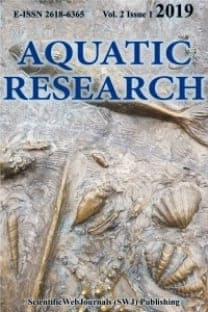Strait of Istanbul, major accidents and abolishment of left-hand side navigation
Strait of Istanbul is one of the most difficult waterways in the world. It’s curved structure, sharp bends which require 12 major course alterations form a unique marine environment for passing vessels. Currents also form a natural difficulty for navigation, especially at areas at the North of Kandilli point. There are three types of currents prevail in the Strait of Istanbul: the first is the surface currents, which finds it’s dynamics at the difference of sea levels between Sea of Marmara and Black Sea. Due to this difference in levels, which is around 40 centimeters on average and fed by the rivers flowing into Black Sea, waters run down to Sea of Marmara and to outer seas. Second, is the counter currents and eddies inside the bays. Third is the subsurface currents, formed by the difference of salinity between Marmara and Black Sea, starts from 10 meters to 40 deep and in counter direction with the surface currents. To make this currents system more complicated, in the case of strong SW winds when lasted more than 2-3 days, the whole currents system changes when the surface currents reversed by the wind and above-mentioned difference in sea levels exchange positions to the favor of Sea of Marmara. Due to this unique system of currents, Strait of Istanbul used to have a unique navigational system, too. Starting from ancient times, ships navigating in the Strait of Istanbul used to navigate on the Port side, especially when navigating from Sea of Marmara to Black Sea direction. Thus, ships could get better protection against current. This practice was inked on the paper in 1933 and by the Istanbul Port Regulation through which it became compulsory for ships navigating in the Strait of Istanbul. But as the international regulations on the preventing collision at sea emerged and it appeared that right-hand navigation was established for narrow channels and altering the course to Starboard in the headon situations has become a rule, the Left-hand side navigation in the Strait of Istanbul started to lead to confusion. There have been three major accidents in the Strait of Istanbul which could be attributed to confusion created by this national rule against the international rule; in 1960, 1966 and 1979, finally Left-hand side navigation in the Strait of Istanbul was abolished in 1982. This article is about these long-term proceedings of Left-hand side navigation in the Strait of Istanbul, concentrating on and analysing three major accidents.
___
Akten, N. (2007). Türk Boğazları ve Geleceği. Çetingil ve Kender’e 50. Çalışma Yılı Armağanı, p: 246.Barlas, M. (1979). Sorular ve Sorunlar (Interview with veteran pilot Tahsin Keşmir) Turkish daily newspaper Milliyet, 19.11.1979, p. 11.
Cumpana, C. (2006). Tragedia navei "Independenţa", Editura Telegraf Advertising, p. 185-195.
IMO Web Site (2019, September 23). http://www.imo.org/en/OurWork/Environment/PollutionPre vention/OilPollution/Pages/Background.aspx (Retrieved on 15/09/2019).
İstikbal, C. (2001). Regional Transport Demands and the Safety of Navigation in Turkish Straits, In: Problems of Regional Seas 2001: Proceedings of the International Symposium on the Problems of Regional Seas, Turkish Marine Research Foundation, p. 77, Held between 12-14 May 2001, Ataköy Marina, İstanbul, Turkey.
İstikbal, C. (2006). Turkish Straits: Difficulties and Importance of Pilotage (2006), Edit: Oral, N. and Öztürk, B. The Turkish Straits, maritime safety, legal and environmental aspects. Turkish Marine Research Foundation, Istanbul. Publication Number 25, p: 66-80. ISBN: 975-8825-15-1
İstikbal, C. (2010). Marmara Denizinde Deniz Ulaşımı ve Türk Boğazları, In: Marmara Denizi 2010 Bildiriler Kitabı, Öztürk B. Ed. TÜDAV Yayın No: 32, p. 65. ISBN: 978- 975-8825-22-6
İstikbal, C. (2012). Dünyada ve Türk Deniz Ticareti İçerisinde Kılavuzluğun Tarihsel Gelişimi, In: Türk Deniz Ticaret Tarihi Sempozyumu IV, Gemi Mekineleri İşletme Mühendisleri Odası, Sena Ofset, p. 52, 16-17 April 2012.
Koçu, R.E. (1963). İstanbul Ansiklopedisi, Cilt 6, İstanbul Ansiklopedisi ve Neşriyat Koll. Şti, p. 2897.
Kvaternik, Boris (2018, July 7). http://kurziv.net/najvecahrvatska-pomorska-tragedija-i-mi-na-zalost-imamo-svojtitanic/ (Retrieved October 1, 2019).
Lameijer, J.N.F., Cockroft, A.N. (2004). A Guide to Collision Avoidance Rules, imprint of Elsevier, Sixth Edition, p.97. ISBN 0-7506-6179-8
Mihailescu, S. (2009). Petrolierul „Independenţa“ şi misterele lui, from. https://adevarul.ro/news/eveniment/petrolierulindependenta-misterele-lui1_50accc777c42d5a6638a13ff/index.html (Retrieved on 19/11/2019).
Nautical History, OCT-DEC 2010. vol 73, edition of the Maritime Museum of Greece p. 30.
Oğuzülgen, S. (2016). 80. Yılında Montreux Türk Boğazları Sempozyumu, p. 182-185 . 9-10 November 2016, Bahçeşehir University, Istanbul.
Özözlü, H. (2018). Independenta Tanker Yangını, https://www.sihirlitur.com/olaylar/tanker/tanker_yazi.html (Retrieved on 19/11/2019).
Özsoy, E., Latif, M.A., Beşiktepe, Ş. (2002). The current system of the Bosphorus Strait based on recent measurements. The 2nd Meeting on the Physical Oceanography of Sea Straits, Villefranche, 15th-19th April 2002.
Soltani, A. (2009). Proactive maritime safety: concepts and applications. World Maritime University Dissertations. 254. http://commons.wmu.se/all_dissertations/254 p.7 (Retrieved on 20/09/2019).
Tuğrul, S., Beşiktepe, Ş.T., Salihoğlu, İ. (2002). Nutrient exchange fluxes between the Aegean and Black Seas through the Sea of Marmara. Mediterranean Marine Science, 3(1), 33-42. https://doi.org/10.12681/mms.256
Turkish Navy (1990). Istanbul Strait Current Profiles, Turkish Navy publications, Istanbul, Turkey.
Ünlüata, Ü. Oğuz, T. Latif, M.A., Özsoy, E. (1990). On the Physical Oceanography of the Turkish Straits, In: The Physical Oceanography of Sea Straits, L.J. Pratt (Ed.), NATO/ASI Series, 318, 26-60, Kluwer Academic Publishers, Dordrecht. https://doi.org/10.1007/978-94-009-0677-8_2
- ISSN: 2618-6365
- Yayın Aralığı: 4
- Başlangıç: 2018
- Yayıncı: Nuray ERKAN ÖZDEN
